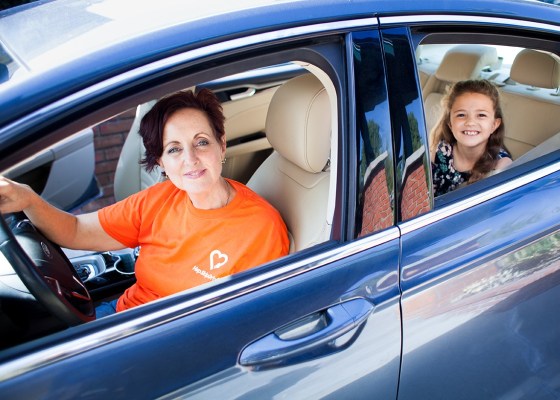Students around the country are about to return to school after the summer holiday, and they’re doing so at a time when both coronavirus transmission and the effects of climate change are mounting. Last year, HopSkipDrive, a rideshare platform for kids, had to let go much of its staff amid school lockdowns. Now, the company is betting that demand for its rideshare service will increase as parents send their kids back to school. To help fund that growth and expand into 30 new markets over the next year and a half, HopSkipRide raised $25 million in a Series C.
“We are also continuing to invest in our route optimization software, which just helps districts get more efficient and greener,” Joanna McFarland, CEO and co-founder, told TechCrunch. “By reducing overall fleet size, we play a significant role in the overall acceleration of the electrification of the entire yellow bus network.”
McFarland also said HopSkipDrive plans to use the new cash injection, which came from Energy Impact Partners, Keyframe Capital, FirstMark Capital and 1776 Ventures, to invest in electrification initiatives that will spur the company’s goal of helping its CareDrivers transition to electric vehicles affordably via partnerships with OEMs. Currently, hybrid or electric vehicles make up 19% of the startup’s CareDriver network vehicles, which are owned by gig economy workers similar to Uber or Lyft.
Unlike those rideshare giants, however, HopSkipDrive’s drivers have over five years of caregiving experience, and as a result, are predominantly women who enjoy flexible work schedules and the ability to contribute to the ridesharing economy without driving sketchy drunk people around at night.
HopSkipDrive is among a small handful of emerging startups dedicated to modernizing the public school bus system. Zūm, another student transportation service, has a similar mission statement with a different path to market. Whereas Zūm takes over the entire transportation system and even has lofty goals of acquiring 10,000 electric buses by 2025, HopSkipDrive focuses more on meeting the transportation needs that don’t neatly fit on a school bus or on a school route.
“I think prior to COVID, we were really seen as an alternative transportation solution for districts, so helping with individualized transport solutions for students with special needs, for students experiencing homelessness or in foster care, and that’s the core service we offer today,” said McFarland. “But as we’ve seen during COVID, all of these trends have only been accelerated and districts have had to deal with a lot more of that than they ever have in the past, but they’re also suffering from a severe bus driver shortage that is reaching a critical point. So anytime you have less than 12 kids on a school bus, we are a cost-effective solution, and we are also a much cleaner solution.”
HopSkipDrive’s more complementary approach has helped the company acquire contracts with more than 300 districts in nine states, plus Washington, D.C. During the pandemic, the startup signed on about 150 new contracts, and this year has renewed 100% of its existing contracts, many of them with price increases, according to McFarland.
Even as Delta variant cases continue to rise to record levels, schools are planning to reopen, which means services like HopSkipDrive’s will be essential. McFarland says the company has COVID SafeRide standards, which include policies around sanitization and mask-wearing, as well as anonymous exposure tracing via the app.
“I don’t think we’ll see school closures again like we did in 2020,” said McFarland. “I think the tide has turned where everybody realizes that the cost of keeping kids out of school was far greater than the risk of them attending school in person.”
